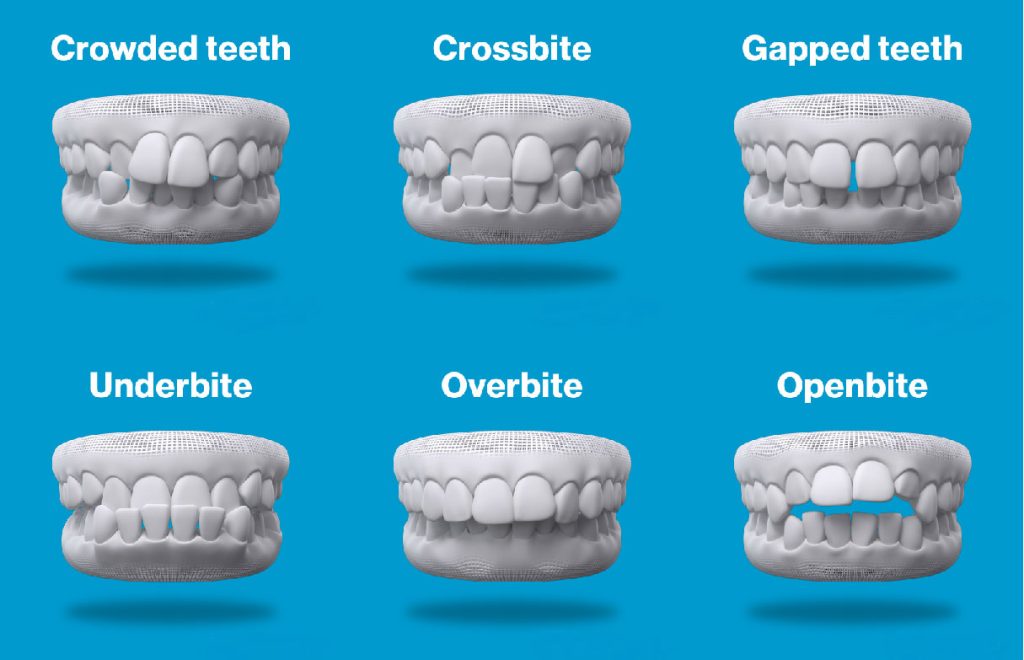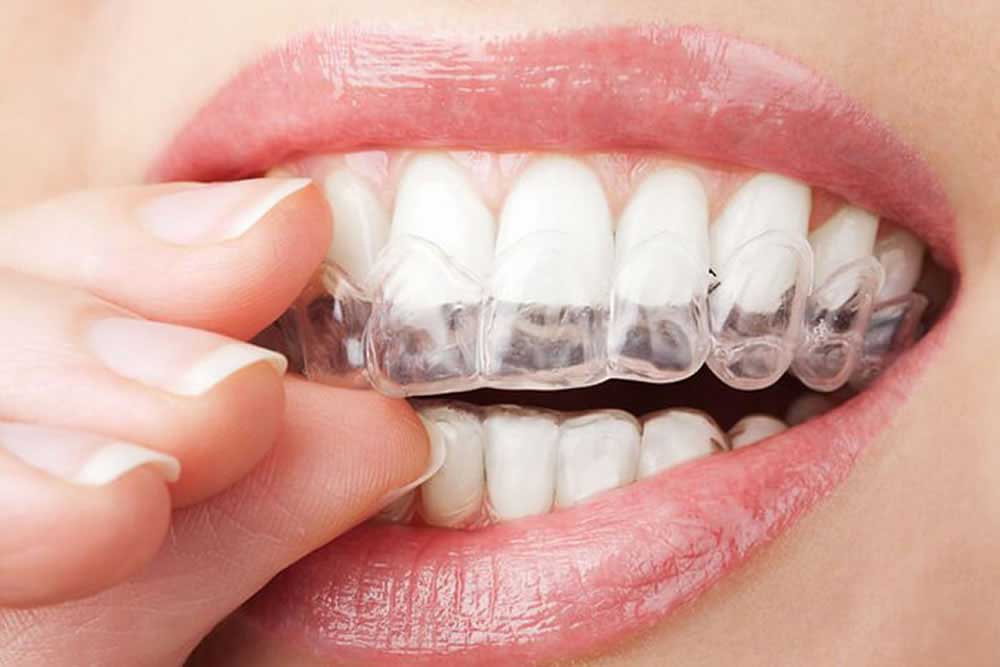If teeth are left misaligned,
- Susceptible to tooth decay, gum disease and TMJ disorder
- Difficulty in correct pronunciation
- Causes bad breath
- Can distort the face during the developmental process and adversely affect the development of the jaw.
This can also have a negative effect on the development of the jaw.
It can also cause psychological complexes after growth!
Check the alignment of the teeth
It is important to check what kind of teeth you have and how they are affected there.
Bumpy alignment of teeth, canine teeth visible when smiling
The size of the teeth is unbalanced in relation to the size of the jaw and the teeth grow backwards and forwards or overlap, which may result in ‘uneven’ or ‘double’ teeth.
They are more likely to leave food debris on the teeth but are less likely to brush them, making them more susceptible to tooth decay and gingivitis. Care should be taken to avoid this developing into periodontal disease.
Closing the mouth causes a passive mouth
Teeth alignment in which the lower row of teeth is more forward than the upper row when the mouth is closed may indicate a ‘crossbite’, in which the lower jaw is overdeveloped.
From the outside, the jaw is squat, which can make it difficult to chew properly or to hear when speaking.
In addition to genetic factors, there may also be a habit of biting the upper lip often or sticking out the tongue.
There is no treatment for an opposing bite when the permanent teeth have come in, other than orthodontics.
Overbite
If the upper front teeth are much further forward than the lower front teeth, this may be due to an incorrect angle of front tooth eruption, overgrowth of the upper jaw or undergrowth of the lower jaw, or ‘maxillary prognathism’.
The upper lip may remain elevated, making it difficult to close the mouth, or the mouth may become distorted when the child tries to force the mouth closed.
This is more common in children who are mouth breathers during development or who have a habit of finger sucking.
Deepbite
When the upper and lower teeth are combined, the front teeth are much further forward and the upper teeth hide the lower teeth, which may be a case of ‘overbite’ or ‘deep bite’, where the bite is too deep.
It can cause a lot of gum to be visible on the upper jaw when smiling, and can also cause the lower front teeth to damage and irritate the inside of the upper jaw.
Premature loss of baby teeth or missing back teeth can cause the bite to become too deep.
Openbite
A gap between the upper and lower front teeth when the mouth is closed may be an ‘open bite’ or ‘open bite’.
It is seen in children who are mouth-breathers during the developmental process, have a tongue protruding forward or have a habit of finger-sucking.
The gap between the upper and lower teeth can make it difficult for the child to bite through things with the front teeth properly or to hear when speaking.
You have a gap tooth
An open space between the teeth may correspond to a ‘midline separation’, where there is an imbalance between the size of the teeth in relation to the size of the jaw and there are not enough teeth growing in. It may be difficult to pronounce certain words, such as ‘sa’, and it may be difficult to hear them when speaking.
Orthodontics is the process of correcting the misaligned teeth described above while making use of your own teeth.
Better aligned teeth can have a positive effect on eating, health and appearance.
It will also help prevent cavities and gum disease, bad breath and gastrointestinal problems, which will help maintain good health in the future.
Invisalign is ‘invisible, painless and removable’ orthodontic treatment
Invisalign is a treatment method that uses near-transparent mouthpieces (=aligners).
The aligners are custom-made: after wearing the first one, the patient wears the second one 7-10 days later, and so on, gradually moving the teeth.
The number of aligners can be as few as 20 or 30 and as many as 99, e.g. if the teeth are extracted and straightened. 52 aligners are needed for approximately one year of treatment, if one is changed every week.
The near-transparent aligners are virtually unnoticeable to others when worn.
As there is no metal protruding, damage to the cheeks or tongue and sudden onset of pain are rare.
They are also removable, so you can enjoy your meals as usual.
Aligners need to be worn for 20 to 22 hours a day.
Since you wear them for at least 20 hours a day, you will be constantly using the aligners except when you eat and brush your teeth.
This is the only disadvantage of Invisalign.
If you are a pain in the ass or forgetful and not confident about your wearing time… Invisalign may be rather unsuitable for you.
Teeth alignment affects health
Many people think that orthodontics is for children or when they are young, but at our clinic, people in their 60s have also started Invisalign treatment.
The alignment of your teeth is not only important aesthetically, but also affects your health.
Today’s orthodontic treatment can help you regain your confidence and youth with a little patience and effort.
◆ www.bestdentist.com.au ◆
Dr Knox Kim is Invisalign’s Diamond Invisalign Provider and Invisalign’s only Clinical consultant/ Speaker among General dentists in Australia
Top 6th in the world in Invisalign International Gallery, Principal dentist at Sydney CBD and vice principal dentist at Tokyo, Finished over 1,500 Invisalign patients in both Sydney and Tokyo,
treating over 400 patients in both clinics, Invisalign’s official lecturer, lecturing at Shangai, Hangzhou, Seoul, Tokyo, Osaka, Nagoya, Las Vegas, and all the major cities in Australia and New Zealand
#straightyourteethwithoutbraces #invisalign #braces #sydneydentist#dentalclinicatworldtower #cosmetic #bestdentist #インビザライン #シドニー歯科 #歯医者 #歯科矯正 #日本語歯医者 #海外歯科#オーストラリア #インビザラインダイヤモンドプロバイダー#隐适美#牙科诊所#中文#牙医
Information Disclaimer
The content of this article is meant for informational purposes only and should not be considered a source of professional advice, recommendations, or endorsements. It is not a substitute for seeking expert guidance or making well-informed decisions based on individual circumstances. Although we strive for accuracy and reliability, we cannot guarantee the information's completeness or suitability for all situations. Readers are urged to verify facts, consult experts, and consider their own context before taking actions or decisions based on this content. No warranties, explicit or implied, are provided regarding the accuracy, timeliness, or completeness of the presented information. Relying on this information is at the reader's own discretion and risk. We encourage readers to consult relevant professionals or experts for advice tailored to their specific needs. Neither the author, publisher, nor any affiliated parties will be held responsible for errors, omissions, or damages resulting from the use or reliance on the information in this article.


